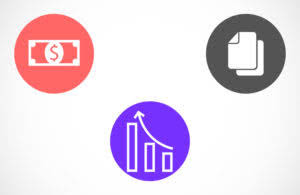
Alden emphasized that these journals are often where the guidelines that inform clinical care are published, so the AI provides full access to those materials. Thompson stated that in primary care, a significant portion of a clinician’s time with patients is spent figuring out if the symptoms presented align with a common condition or something decision making framework more serious. In the case of a common condition, providers can often make recommendations or begin setting up care plans at that same visit, and for a more serious condition, the clinician can refer the patient to a specialist. Tools like ClinicalKey AI are designed to streamline the knowledge retrieval process, summarizing evidence-based content sources — such as medical journals — in a conversational manner based on a clinician’s search query. Let’s use a real life example of creating a project business case to show how the RAPID decision-making process works in real life.
Next Steps
![]()
Collect relevant information — that could be data, customer stories, information about past projects, feedback, or whatever else seems pertinent. Once again, each of these models takes a unique approach to decision-making, so it is important to choose the model that will work best for you and your unique situation. With that said, let’s take an in-depth look at each model and the situations where each one is most applicable. Given that only 20% of team members say that their organization excels at decision-making, most organizations and team leaders have a lot of room to improve in this area.
Building clinical knowledge retrieval AI
- Understanding this is important for seeing the limitations in our current decision-making processes.
- This involves assessing their effectiveness, learning continuously through feedback, and understanding customer insights to ensure outcomes align with objectives.
- However, it is essential to balance this model with other decision-making approaches to address the dynamic nature of business environments.
- A decision-making framework is a model that outlines the process of making a business choice, complete with context, possibilities, and the potential outcomes of each option.
- Case studies from such leading companies shine a light on the advantages of refining decision-making skills and protocols across different scenarios.
- Entities equipped with these analytical tools are capable of forecasting trends with greater accuracy, thus refining their decision-making processes.
No matter which model you go with, communication, collaboration, and organization are key to making good decisions. With that said, using this model effectively does require a certain degree of creativity and imagination since you will have to visualize the adjusting entries outcome of each possible solution. Follow our blog for more content dedicated to running efficient and effective teams.

Gathering Relevant Information
- You’ll save time, and making a decision won’t be an arduous, mentally draining process.
- Pinpointing the issue is the first step to initiating the decision-making process.
- The chosen solution is then implemented, monitored, and adjusted as necessary for effectiveness.
- They facilitate a more structured, data-driven, and collaborative approach that can adapt to changing scenarios and enhance outcomes.
- Developed by Gary Klein, this model is particularly useful in high-pressure situations where quick decisions are necessary.
- Material from skillsyouneed.com may not be sold, or published for profit in any form without express written permission from skillsyouneed.com.
Decision making frameworks and models provide a structure to your team’s decision making based on the type of problem you’re trying to solve. In this post, we’ll outline why decision making frameworks are useful, share decision making models, and provide best practices for making decisions as a team. This guide explores such powerful decision making frameworks designed to help you make better decisions. Whether you’re experienced or just starting out, this guide will give you the knowledge and strategies to make impactful decisions. Within the rational decision-making framework, individuals are encouraged to gather relevant data, analyze the potential outcomes of each alternative, and select the option that maximizes their objectives. This methodical approach is often used in complex decision-making scenarios where a systematic evaluation process is crucial for reaching an optimal solution.
Despite the value of PROs in clinical trials, excessive use should be avoided. The transitional use of PROs places an additional burden on patients and increases the implementation time of trials. At present, diseases using PRO endpoints are mainly concentrated in the nervous and respiratory systems. PROs on these diseases are usually characterized with measuring patients’ feelings, symptoms, and health-related quality of life. In a word, PROs care more about “subjective” information rather than “objective” indicator.
Recognition-Primed Decision Making Model

With PI Perform, you can put your teams into action and make progress in your work rather than just tracking it. Take the time to test out PI with Bookkeeping for Veterinarians your team, and see if it doesn’t change how you get things done. Regardless of how talented each member of your team is, if employees don’t trust each other, nothing is going to get done.

It’s perfectly acceptable to broaden both frameworks’ applicability beyond your roadmap. Group decision-making is a must when dealing with sensitive topics or subjects that a lot of people have an interest in. A substantial part of what stakeholder management means is the need to share accountability. Frameworks help a great deal in organizing people and giving clarity on objectives. The Golden Circle was introduced by leadership specialist Simon Sinek back in 2009 in his book Start with why. Of course, those three frameworks might be used in a group context also, no problem.



Lascia un commento